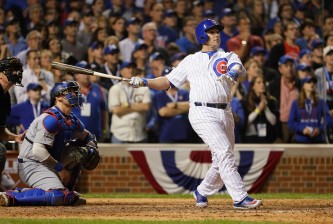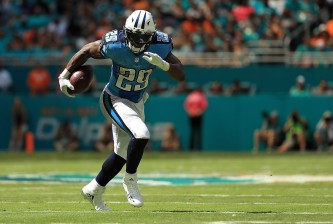NFL practices are shorter and fewer of them are in pads than they used to be. Teams can only practice once per day. The offseason is longer. It’s gotten a lot harder to develop players, especially quarterbacks, because there simply isn’t enough reps and time to do so.
Teams have done their best to adjust. The Philadelphia Eagles practice continuously and they save corrections for the film room, but that approach may not be necessary in the future, at least not for quarterbacks.
As virtual reality technology develops, players will be able to take virtual reps without risk of serious injury. It’s already gaining traction at the pro, college and high school levels as a tool to help quarterbacks make better decisions.
The idea is for the quarterback to be able to take a play, read the defense and know where he needs to go with the ball. It’s an especially useful tool for young quarterbacks, who may be learning new offenses and how to decipher new defenses. It’s football brain training.
So far, the Minnesota Vikings, Tampa Bay Buccaneers and Dallas Cowboys have embraced the technology. So too has Indianapolis Colts quarterback Andrew Luck, who returned to his alma mater this offseason to test Stanford’s version called STRIVR.
“Anything that can give you an edge as a quarterback, you’re going to check out,” Luck said, via Zak Keefer of the Indianapolis Star. “I think it will have a big impact.”
Teams are always looking for an edge. When technology becomes available that can extend the practice field for the quarterback position, they are going to look into it. Many young quarterbacks—and some of the older ones—grew up playing video games, so virtual reality training isn’t a difficult adjustment.
“It’s natural,” said Cowboys quarterback Tony Romo, via Jon Machota of the Dallas Morning News. “It’s easy. It’s like the iPhone, simple.”
Luck doesn’t think many NFL quarterbacks have tried the technology—at least not yet. Yet nearly every quarterback has good things to say about it, including an older one like Romo.
“It really is a unique and special thing, and we’re just getting started with it,” Romo said. “This will be a big deal here shortly. You will see it all over the place soon.”
Vikings’ starting quarterback Teddy Bridgewater is also embracing the technology. Bridgewater sees the technology as especially useful to players that don’t get as many practice reps.
“It’s going to be very helpful from the learning curve, for not only me but for other guys in the room,” Bridgewater said, via the Associated Press. “We have backups who won’t get the same amount of reps that I will get throughout the course of game week, so for them to be able to go in and steal reps is going to be very helpful.”
The technology is currently limited to pre-programmed plays and defenses, but Luck praised the fact that they can upload real footage. As the technology matures, so too will its usefulness.
With additional development, data from GPS tracking devices could regulate how defenders move. Eventually, a simulation against a computer program could be superior to practicing against the scout team—from a mental standpoint—because a computer program can move and play like the opponent.
“Coaches already know how to make guys big and strong,” said Brendan Reilly of EON Sports, which makes one of the systems, via the Associated Press. “Now they want to figure out how to get them to make consistently better decisions on the field. We’re figuring out ways to use data and technology to make that happen. And if you can game-ify the process to make it more enjoyable, players will hopefully embrace that.”
If the flip-phone wielding Luck, the 35-year-old Romo and Bridgewater are already embracing the technology, it won’t be long before other quarterbacks try it out. The tablet computer has changed the way players watch film and virtual reality may change the way they practice.























